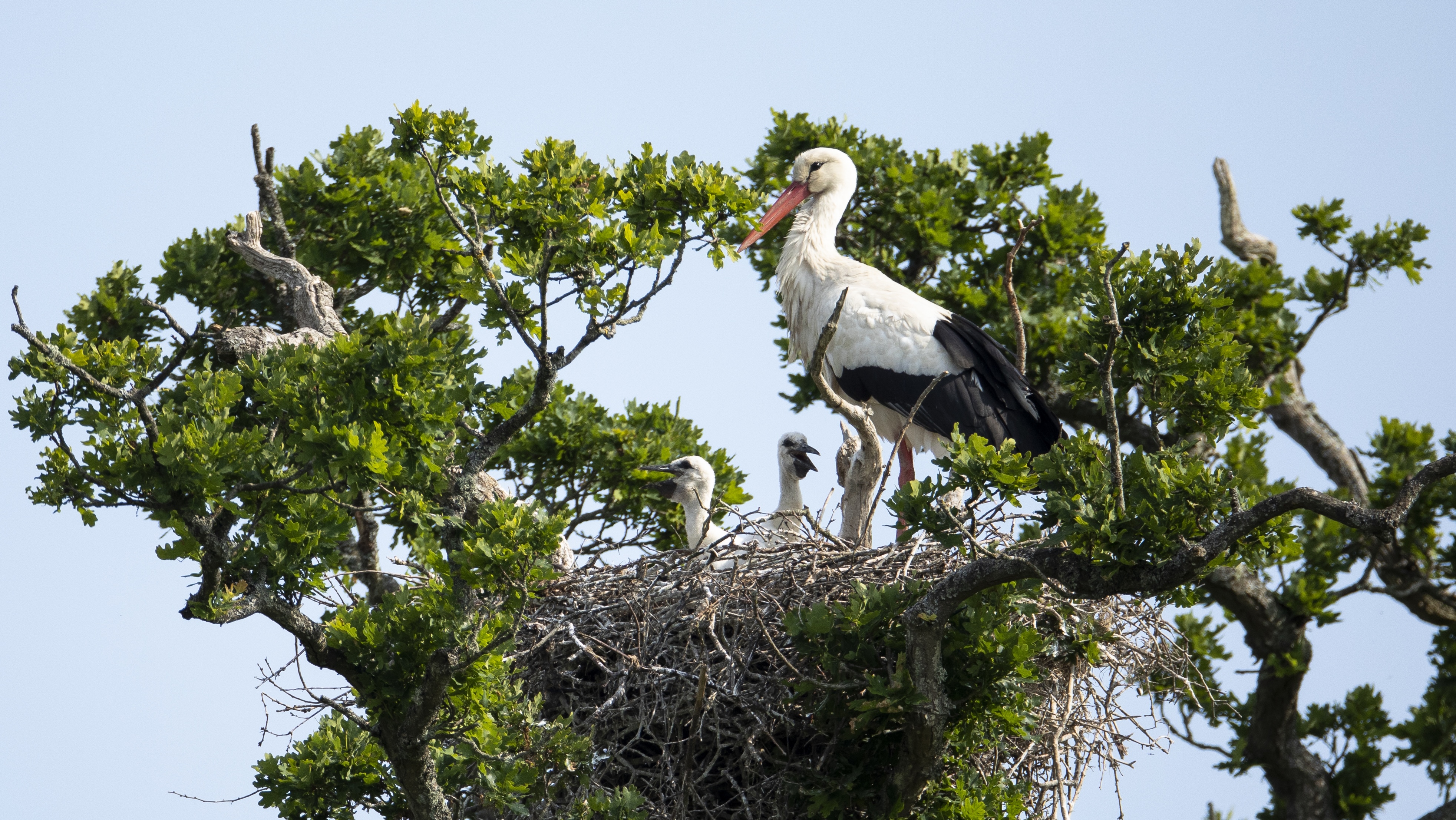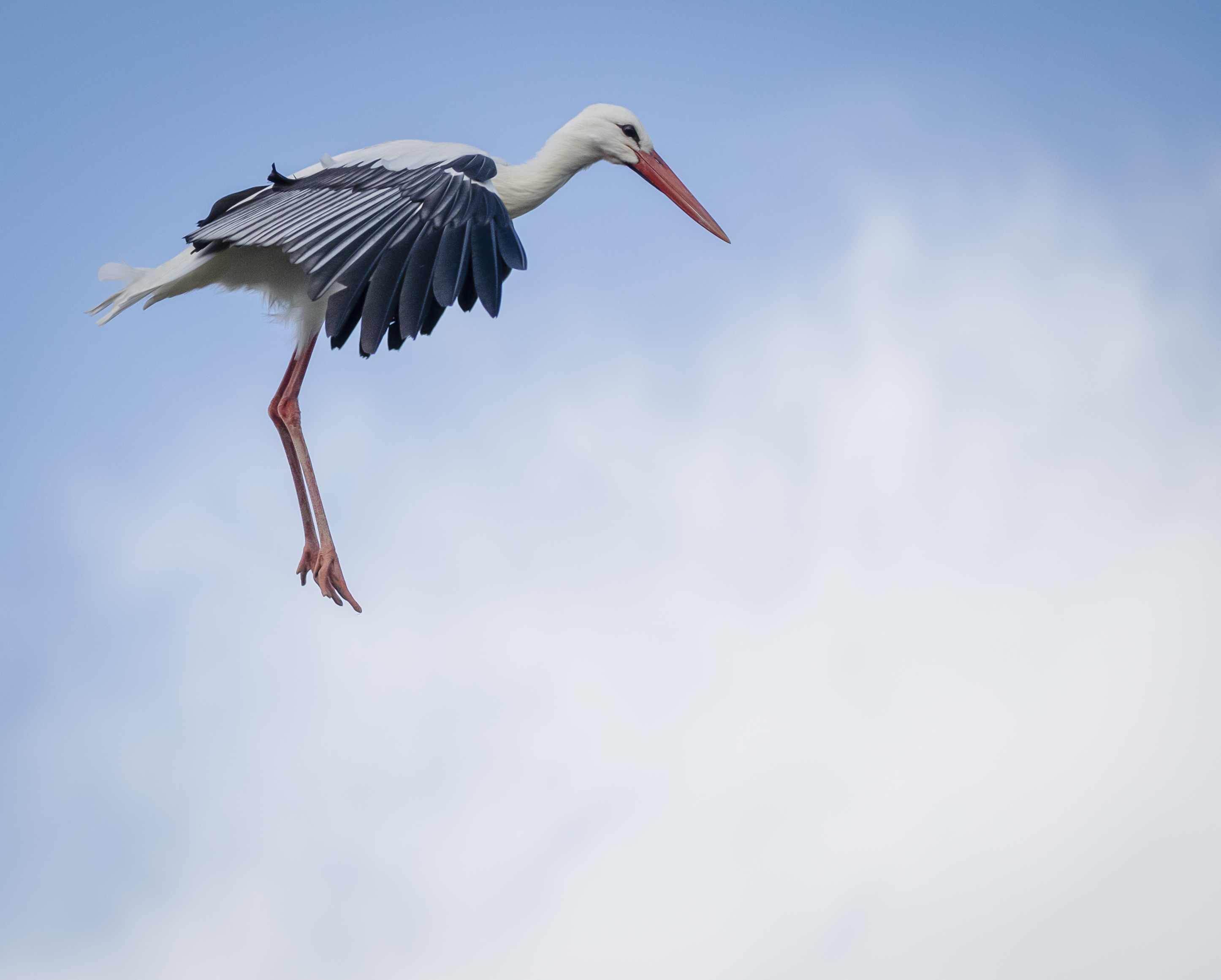The UK gets its first ‘European stork village’ — and it's in West Sussex
Although the mortality rate among white storks can be up to 90%, the future looks rosy for breeding pairs in southern England.


Some 600 years ago, the white stork went extinct in Britain — the victim of habitat loss and hunting —and was relegated to folklore; existing only in our imaginations as something that delivers babies.
Now, a new chapter in their story has been written: numbers are joyfully on the rise in southern England and Storrington in West Sussex has been proclaimed the UK’s first ‘European stork village’.
The work to reintroduce white storks back into the UK began in 2016 with the arrival of several non-flying birds from Warsaw, Poland. These were kept at Cotswold Wildlife Park and their eventual offspring sent to Knepp Estate in West Sussex, and Wadhurst Park, East Sussex, to establish their own colonies.

A stalk coming into land, with its legs ready to support it, looks like it's been photoshopped onto a sky.
According to The White Stork Project, the brains behind the project, ‘white storks live in colonies for safety in numbers and their failure to breed in the UK over the last few centuries is thought to be largely because there has been no nesting colony to provide security for visiting migrants.’ So, why Sussex? Well, the elegant birds are particularly associated with the area and, in particular, with Storrington whose emblem features a pair of white storks. What-is-more, the Saxons knew the village as ‘Estorchestone’ or ‘the abode of storks’. Together, Storrington and Knepp — the first major lowland rewilding project in England — have been designated the 16th ‘European Stork Village’ for precautions taken to limit the impact of habitat loss on the birds.
And early signs indicate that things are moving in the right direction. In 2024, a record-breaking 53 storks fledged from wild nests at Knepp and a further four from Wadhurst — mostly in ‘large, shaggy nests’, on top of ancient oaks. Three of those young came from a wild male hatched at Knepp in 2021, and spotted in Morocco and Spain before later returning to the Sussex site. A total of nine birds have been fitted with satellite tracking devices, and you can follow their journey, here.
Although not all of the birds embark on a migratory route around continental Europe, the ones that do face a perilous journey fraught with dangers such as power lines, busy roads, large, open stretches of water and a lack of food. The mortality rate can be as high as 90%.
‘Traditionally, storks are considered harbingers of hope, joy and rebirth,’ says The White Stork Project. ‘We hope their return to the UK will signal a transformation, a reconnection with nature that will enthuse and inspire others and help bring about the landscape restoration we so desperately need.’
Exquisite houses, the beauty of Nature, and how to get the most from your life, straight to your inbox.
Rosie is Country Life's Digital Content Director & Travel Editor. She joined the team in July 2014 — following a brief stint in the art world. In 2022, she edited the magazine's special Queen's Platinum Jubilee issue and coordinated Country Life's own 125 birthday celebrations. She has also been invited to judge a travel media award and chaired live discussions on the London property market, sustainability and luxury travel trends. Rosie studied Art History at university and, beyond Country Life, has written for Mr & Mrs Smith and The Gentleman's Journal, among others. The rest of the office likes to joke that she splits her time between Claridge’s, Devon and the Maldives.
